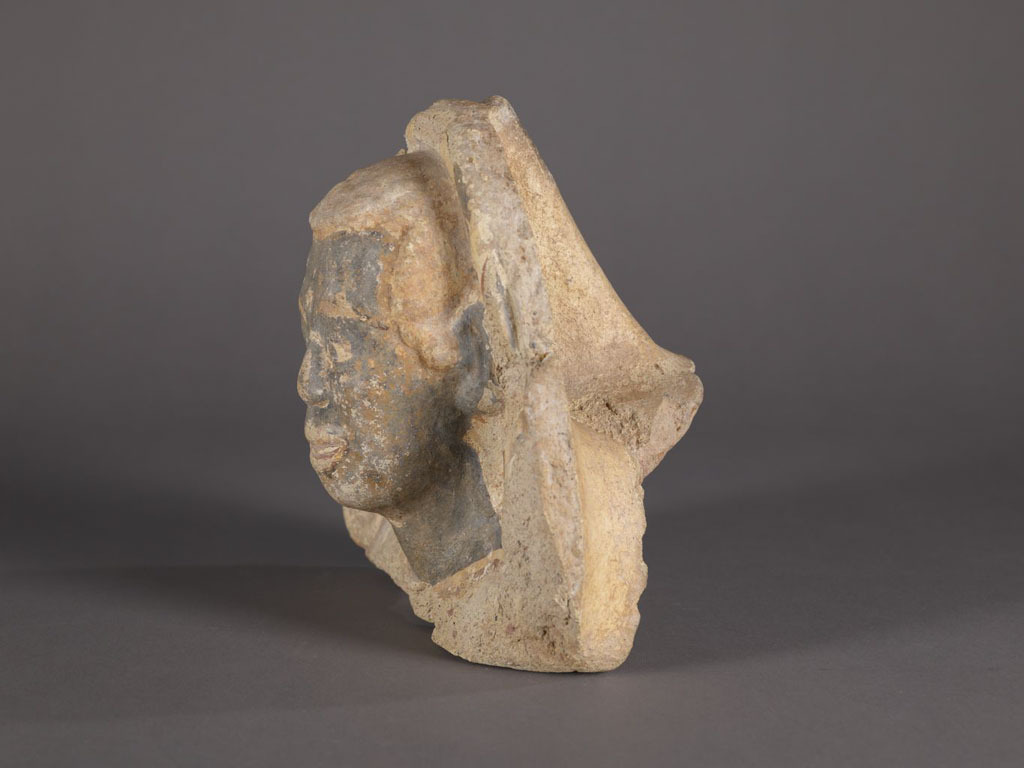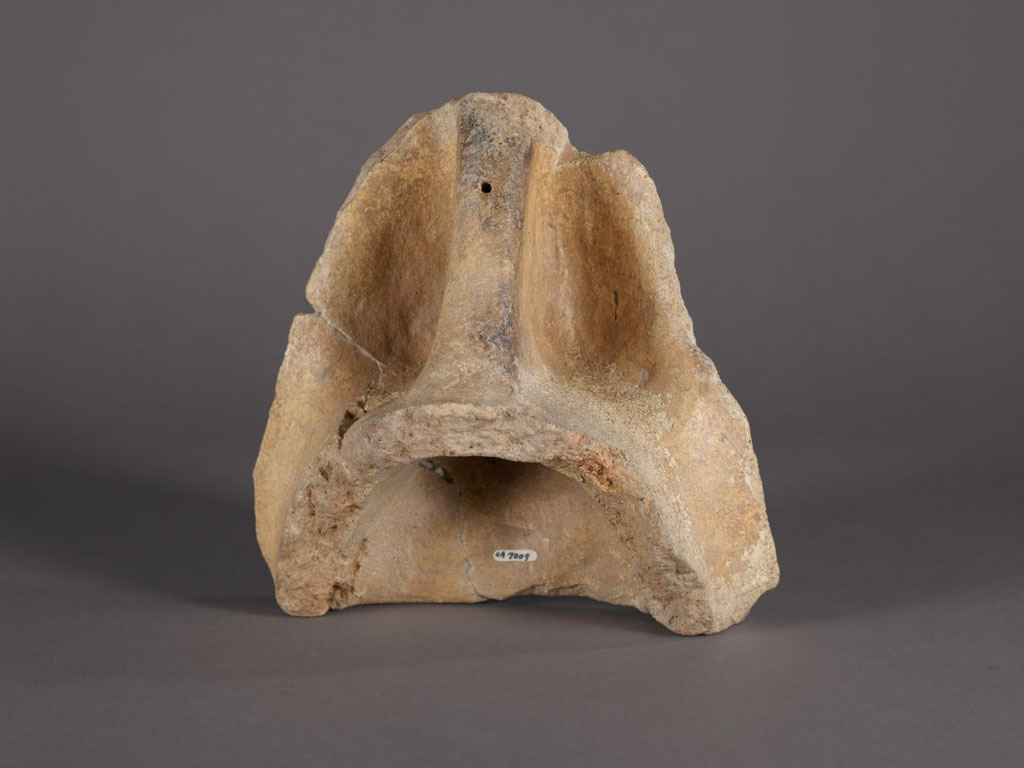The subject of this terracotta fragment is a young Black African man who stares directly forward with his mouth partially open. His lips and short hair may have been highlighted in red pigment. The edge of his tunic is visible over his shoulder. The entire piece was surrounded by a shell form, now partially preserved in the scrolls on either side of his face.
The portrait and surrounding components formed a decorative architectural element common to Etruscan buildings called an antefix. An antefix marks the transition from the eaves to the roof and, in the case of Etruscan buildings, often served to protect more delicate building materials, such as the ends of wooden beams. Like on this example, the molded designs were highlighted with paint, often red, black, and white. Although heads are commonly represented on Etruscan antefixes, generally the representations depict women. The Menil Collection antefix is one of at least eight extant examples produced from the same mold, which have been known since the mid-19th century. The antefixes probably all originate from the same Etruscan building in Cerveteri, Italy. Cerveteri was a thriving Etruscan city in the 5th century BCE, to which the antefixes (and their corresponding temple or large structure) date.









